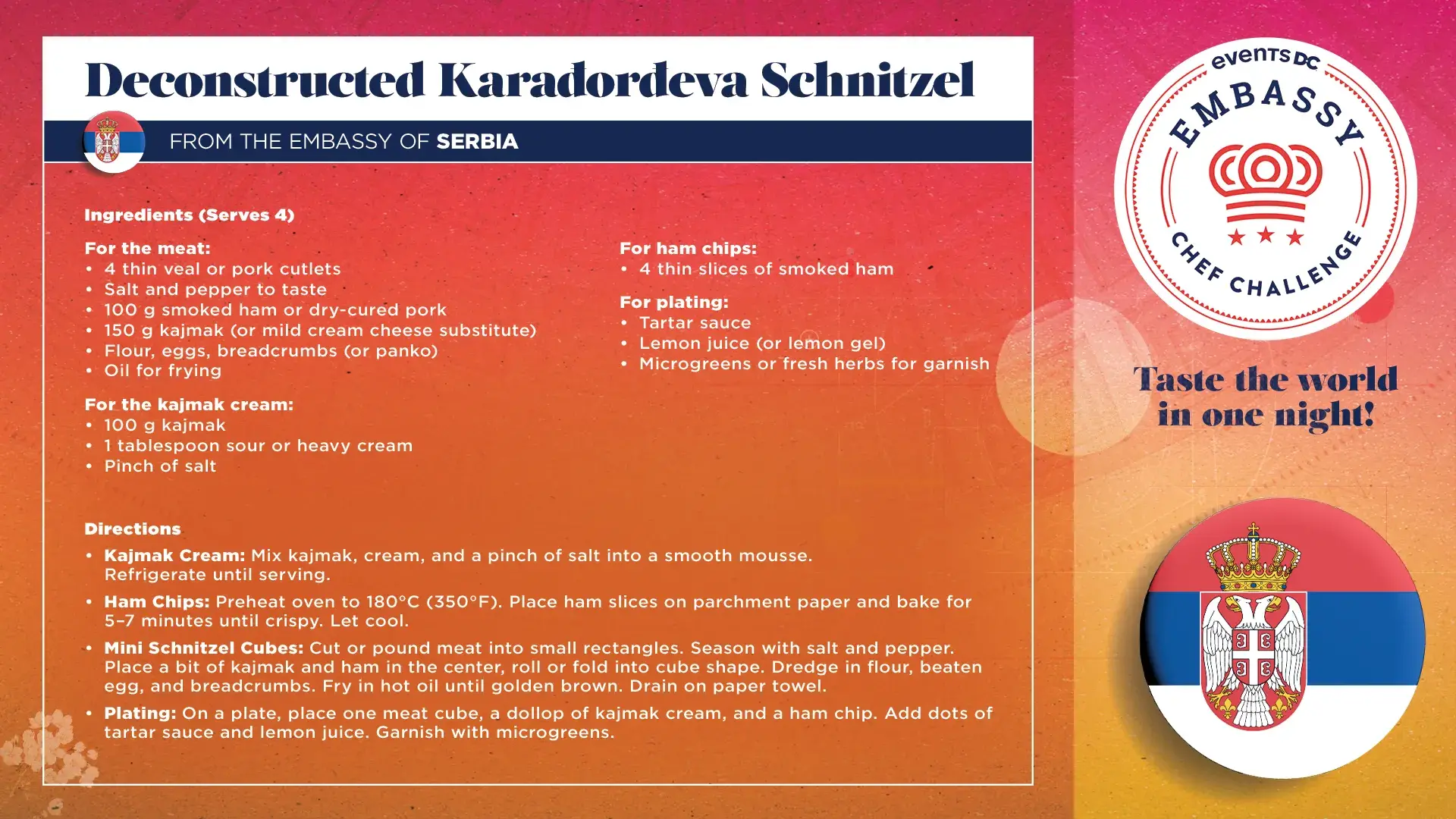Cultural background: Karađorđeva šnicla (pronounced Karadjordjeva schnitzel) is one of the most iconic and cherished dishes in Serbian cuisine. Invented in the mid-20th century, it represents a fusion of old-world culinary heritage and post-war gastronomic creativity. The dish was created in 1959 by chef Mića Stojanović at the famed “Golf” restaurant in Belgrade. Originally improvised for a visiting dignitary who requested something refined, the dish was named after Karađorđe Petrović, leader of the First Serbian Uprising and founder of the Karađorđević dynasty, as a tribute to national pride.
At its heart, the dish is a rolled schnitzel made of veal or pork, stuffed with kajmak (a traditional Serbian clotted cream) and smoked ham, then breaded and deep-fried until golden. It is typically served with tartar sauce, lemon, and potatoes. Visually, it resembles a regal roulade—impressive in size and flavor.
Karađorđeva šnicla quickly gained prominence across Yugoslavia in the 1960s and became a staple at high-end restaurants and festive family tables. It is often dubbed “the Serbian cordon bleu,” but its personality is distinctly Balkan, rooted in rustic hospitality and elevated by rich dairy and smoked flavors.
What makes it unique isn’t just its taste, but its symbolic resonance. The name evokes a connection to Serbian heritage, bravery, and dignity. The dish bridges everyday comfort food with an air of formality, making it a perfect candidate for diplomatic and cultural representation.
In its deconstructed version, the classic components— meat, kajmak, ham, crispy coating, and tartar sauce —are preserved but reimagined with refined textures and plated artistry, capturing the essence of the original in a modern culinary language. It allows global guests to appreciate the depth and character of Serbian cuisine in a format they will find both elegant and memorable.
This dish represents Serbia’s balance of tradition and innovation, of humble ingredients transformed into festive fare, and of a proud culinary identity ready to be shared with the world.
Chef’s name and title: Miloš Lazić, Culinary Maestro
